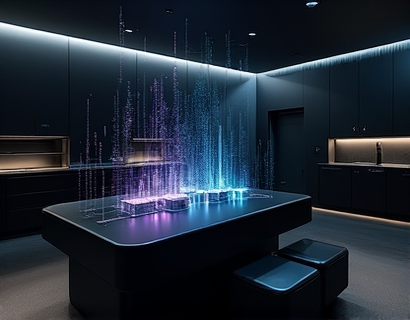Unlock Real-Time Engagement: Transforming Live Communication with Advanced AI Avatar Technology
The landscape of digital communication is undergoing a revolutionary transformation with the advent of advanced AI avatar technology. This cutting-edge solution is redefining how businesses and content creators engage with their audiences during live presentations and virtual events. By integrating lifelike, dynamic characters into real-time interactions, this technology sets a new standard for interactive and memorable experiences. The fusion of creativity and innovation in AI avatars is not just enhancing the way messages are delivered but is also rewriting the rules of engagement in the digital space.
Understanding AI Avatar Technology
AI avatar technology leverages sophisticated algorithms and machine learning to create virtual characters that can mimic human-like behavior and interactions. These avatars are designed to be highly adaptive, responding to real-time inputs and context to deliver personalized and relevant content. The technology involves a combination of computer vision, natural language processing, and deep learning to ensure that the avatars can understand and react to their environment seamlessly.
The core of this technology lies in its ability to process and interpret vast amounts of data in real-time. This capability allows the avatars to maintain eye contact, gesture appropriately, and even exhibit emotional responses, making the interaction feel more natural and engaging. The result is a more immersive experience for the audience, who are more likely to remain attentive and connected throughout the presentation or event.
Enhancing Live Presentations
In the context of live presentations, AI avatars can serve as dynamic speakers, co-hosts, or even interactive guides. These virtual characters can present information in a variety of formats, from detailed explanations to engaging storytelling, all while maintaining a high level of interactivity. For instance, an AI avatar can answer questions in real-time, providing immediate feedback and clarification, which enhances the learning experience and keeps the audience engaged.
Moreover, AI avatars can be customized to fit the brand and tone of the presentation. Whether it's a formal corporate event or a casual webinar, the avatar can be tailored to match the desired aesthetic and personality, ensuring consistency and professionalism. This level of customization is particularly valuable for brands looking to reinforce their identity and message through their digital communications.
Transforming Virtual Events
Virtual events have become increasingly popular, especially in the post-pandemic world. However, maintaining audience engagement in a virtual setting can be challenging. AI avatar technology addresses this issue by introducing interactive elements that mimic the energy and dynamism of in-person events. Virtual avatars can facilitate networking sessions, lead Q&A segments, and even host workshops, creating a more engaging and interactive experience for participants.
One of the key benefits of using AI avatars in virtual events is their ability to handle multiple interactions simultaneously. Unlike human hosts who can only engage with one person at a time, an AI avatar can interact with multiple attendees, ensuring that everyone feels included and heard. This scalability is particularly advantageous for large-scale events where managing human moderators would be impractical.
Real-Time Interactions and Personalization
Real-time interactions are at the heart of AI avatar technology. These avatars can process and respond to user inputs instantly, creating a seamless and natural conversation flow. The use of natural language processing allows the avatars to understand and interpret human language accurately, reducing misunderstandings and enhancing the overall experience.
Personalization is another critical aspect of AI avatar interactions. By analyzing user data and preferences, the avatars can tailor their responses and content to individual audience members. This level of personalization not only increases engagement but also fosters a deeper connection between the audience and the content being presented. For example, an AI avatar can reference a user's previous interactions or interests to provide more relevant and meaningful information.
Case Studies and Success Stories
Several organizations have already embraced AI avatar technology and seen significant benefits. For instance, a major tech company used AI avatars to host a global conference, where the avatars facilitated sessions, answered questions, and provided real-time translations. The result was a highly engaging and inclusive event that received positive feedback from attendees worldwide.
Another example is a leading educational institution that implemented AI avatars in their online courses. The avatars served as virtual instructors, guiding students through complex topics and providing instant feedback. This approach not only enhanced student engagement but also improved learning outcomes, as students felt more connected and supported.
Challenges and Considerations
While the benefits of AI avatar technology are clear, there are also challenges and considerations to keep in mind. One of the primary concerns is the technical infrastructure required to support real-time interactions. High-performance servers and robust network connections are essential to ensure smooth and lag-free experiences. Additionally, the initial setup and integration of AI avatars can be complex, requiring expertise in AI, software development, and content creation.
Another consideration is the ethical use of AI avatars. Ensuring that these virtual characters are used responsibly and do not mislead or manipulate users is crucial. Transparency about the use of AI avatars and clear guidelines for their implementation can help address these concerns and build trust with the audience.
Future Trends and Innovations
The future of AI avatar technology is promising, with ongoing advancements expected to further enhance their capabilities. One area of focus is the integration of haptic feedback, which would allow users to feel physical sensations in response to interactions with the avatars. This could significantly increase the sense of presence and immersion in virtual environments.
Another trend is the development of more sophisticated emotional intelligence in AI avatars. By better understanding and mimicking human emotions, these avatars can create even more authentic and empathetic interactions. This could be particularly impactful in fields such as mental health, where empathetic communication is essential.
Additionally, the convergence of AI avatars with other emerging technologies, such as augmented reality (AR) and virtual reality (VR), is set to open new possibilities. Imagine attending a virtual conference where you can interact with AI avatars in a fully immersive AR environment, or using VR to experience a product demo guided by a lifelike avatar. The potential for innovative applications is vast and exciting.
Conclusion
The integration of advanced AI avatar technology into live communication is transforming the way businesses and content creators engage with their audiences. By providing lifelike, real-time interactions, these virtual characters are setting a new standard for interactive and memorable experiences. As the technology continues to evolve, the possibilities for enhancing digital communication are endless, offering a glimpse into a future where creativity and innovation seamlessly blend to deliver impactful and unforgettable messages.













